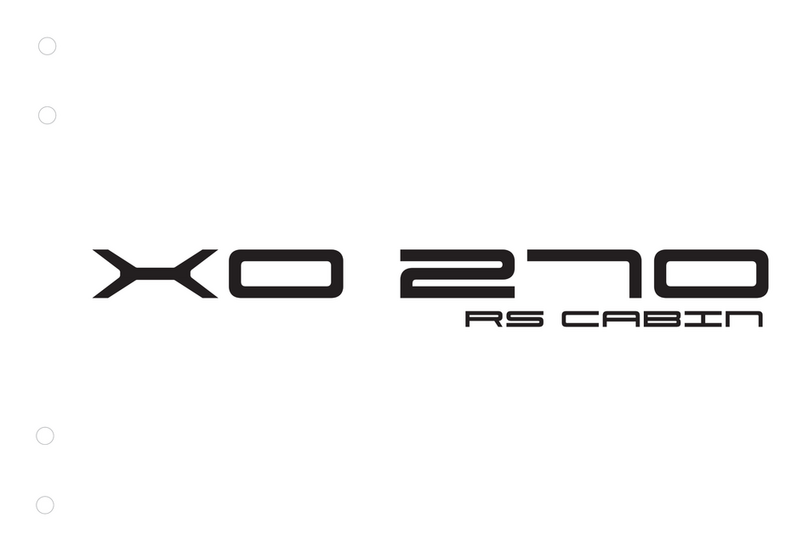9
1 BEFORE DEPARTURE
Read this User Manual carefully.
Before each departure, check at least the following:
Weather and weather forecast
Take the wind, waves and visibility into account. Is your boat's design
category, size and equipment, as well as the skills of the helmsman
and crew adequate for the waters you are about to boat?
Load capacity
Do not overload the boat and always distribute the load properly.
To avoid diminishing your boat's stability, do not place heavy items
too high up.
Passengers
Make sure that a life jacket is available for each person on board.
Before departure, agree on the tasks to be performed by each per-
son during the outing.
Fuel
Make sure that there is enough fuel on board, including a sucient
reserve in case of bad weather, for example. You should have at least
a 20% reserve to allow for the unexpected.
Engine and equipment
Check the operation and condition of steering, electrical devices
and battery, and perform all daily inspection procedures specified
in the engine manual. Check the boat's seaworthiness in general:
check the boat for fuel and water leaks, make sure that the neces-
sary safety equipment is on board, etc. Check that the bilge water
level is at the minimum.
Ventilation
Make sure that the fuel tank compartment is properly ventilated to
minimise the risk of fire.
Securing of equipment
Make sure that all items on board are secured so that they remain
in place in rough seas and high wind.
Nautical charts
If you are not fully familiar with the planned route, make sure that
you have nautical charts that cover a large enough area.
Departure procedures
Agree with the crew on whose task it is to detach each line, etc.
Make sure that the mooring lines or any other lines do not get
caught in the propeller during manoeuvring.
REFER TO THE SEPARATE ENGINE MANUAL FOR ADDITIONAL
INSTRUCTIONS ON THE ENGINE.































